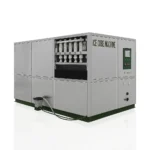Choosing where to live is the decision that determines how much time you spend each day on transit and how comfortable your routine becomes. Start by identifying the exact building or block you are considering rather than relying on neighbourhood names. A room that is advertised as being in a precinct can be anywhere within several kilometres of the central transport node. Walk to the nearest MRT entrance and start a timed commute at the same hour you will travel on workdays. Record door to door time from the room address to your workplace lobby. Repeat the same trip at least twice in different weeks to account for service disruptions.
Equally important is the last mile connection. If the room is more than a 10 minute walk from an MRT station confirm frequent bus connections or a reliable cycling route. For many professionals saving one transfer removes 15 to 20 minutes from the commute and significantly reduces daily stress. Students should prioritise a single transfer or direct shuttle connection to campus. If moving into a suburban estate test evening routes too. Some areas have limited bus service after 10 pm and that affects social life and shift work.
Practical checks you must perform include sound level sampling and lighting checks. Visit the room at night to measure noise from traffic, neighbours and nearby shops. Use a smartphone to record a short clip for later comparison. Stand in the kitchen and at the window at the times you will use them and observe natural light and privacy. Ask to open and close windows to verify locks and check whether insect screens are fitted and in good condition.
Finally, map convenience on foot. List the exact travel times to your top five daily needs by walking distance rather than by neighbourhood. These are supermarket, hawker centre or food court, clinic or pharmacy, nearest bank or ATM and a laundromat. If any of these five essential services require more than a 15 minute walk, consider whether you can accept that trade off. A room that shortens commute but adds a 30 minute walk for daily groceries increases friction that becomes noticeable within a few weeks.
Exact costs deposits and monthly billing explained
Understanding the precise sums you will pay prevents unpleasant surprises. Many adverts omit the full monthly outlay and focus on the headline rent alone. Read the next paragraphs carefully then review the breakdown list that follows. The numbers are explicit examples for common room types and represent what you should expect to sign up for when a listing states that utilities are not included.
Below are explicit monthly totals based on typical, current market practice. Each item includes what it covers and how payments are normally handled.
- HDB single room 1200 Singapore dollars per month rent plus a utilities contribution of 70 Singapore dollars per month. The utilities contribution covers electricity and water and is paid directly to the landlord or to a named account each month. Security deposit is one month of rent and is held against damage or unpaid bills.
- Condominium room 1800 Singapore dollars per month rent plus a utilities contribution of 80 Singapore dollars per month. If the unit is in a condo the landlord might expect tenants to share the condo maintenance fee; confirm whether the landlord pays it or passes it to tenants before signing. Security deposit is one month of rent and a refundable key deposit of 50 Singapore dollars is common.
- Serviced studio 3000 Singapore dollars per month all inclusive. This covers electricity water broadband and weekly cleaning. Deposit is typically equivalent to two weeks rent and is refundable under the provider terms. Short stay offers sometimes require a refundable holding deposit when booking.
- Co living operator room 2200 Singapore dollars per month all inclusive with community services. A holding deposit of 200 Singapore dollars is a common practice to reserve the room while contracts are prepared.
Before signing you must ask for a recent sample invoice for electricity and water if utilities are shared. Landlords will often supply a three month sample showing normal usage. If you intend to run air conditioning for long hours request the landlord to provide a typical AC month figure. To keep costs predictable prefer all inclusive deals if you have irregular schedules or select a capped contribution model where the landlord pays any excess usage above a defined threshold. In all cases obtain the exact payment schedule and account numbers in writing and keep receipts to avoid disputes.
For listings online a useful first step is to confirm the advertised rent matches the figure in the written contract and that any utilities contributions are shown as a separate line item. If the listing is attractive contact the landlord and request a one page summary that lists monthly totals and deposit amounts before visiting the room.
For direct booking options see a curated listing page that specialises in rooms across the city link rent room singapore direct for a straightforward search and clear breakdowns.
Move in protocols maintenance and dispute resolution
Before signing and at move in
When you rent room singapore direct from a landlord, make sure the tenancy agreement is explicit and properly dated. The contract must clearly state the rent amount, deposit sum, and exact notice period for both parties. Request a signed inventory that lists each furniture item and room condition with dated photographs attached. You should also take your own time-stamped photos and keep copies for reference.
Confirm responsibility for routine maintenance. Landlords usually handle major structural issues and plumbing faults, while tenants cover minor wear and tear or accidental damage. If the landlord promises repairs, ask them to specify completion dates in writing and include them as a simple clause in the contract.
On moving day, test all lights, power outlets, and water heaters. Measure hot water flow and document any faults. Send a same-day email report to the landlord and keep proof of delivery. Bringing a small toolkit and basic cleaning kit can help you set a clean standard from day one. For furnished rooms, using mattress and curtain protectors can prevent disputes over stains later.
When problems arise and how to resolve them
Start with clear written communication. For any maintenance request submit a dated message and include photos where necessary. If a repair is urgent such as a burst pipe follow up with a phone call and keep a written note of the conversation. For small disagreements about bills or deposit deductions propose informal mediation first and share evidence like invoices and photos. If this fails use formal mediation options available locally which are low cost and designed for tenancy disputes.
For serious breaches or suspected scams escalate promptly. Report fraudulent ads to the hosting platform and the police. For HDB tenancy breaches report to HDB to confirm whether the tenancy is permitted under current rules. If the dispute concerns a refundable deposit collect all proof of payment and file a claim at the Small Claims Tribunal where a structured process exists for resolving sums within its limits. Avoid emotional exchanges and focus on a factual paper trail. Most disputes settle once both sides see the documented evidence and the practical steps needed to remedy the issue.


